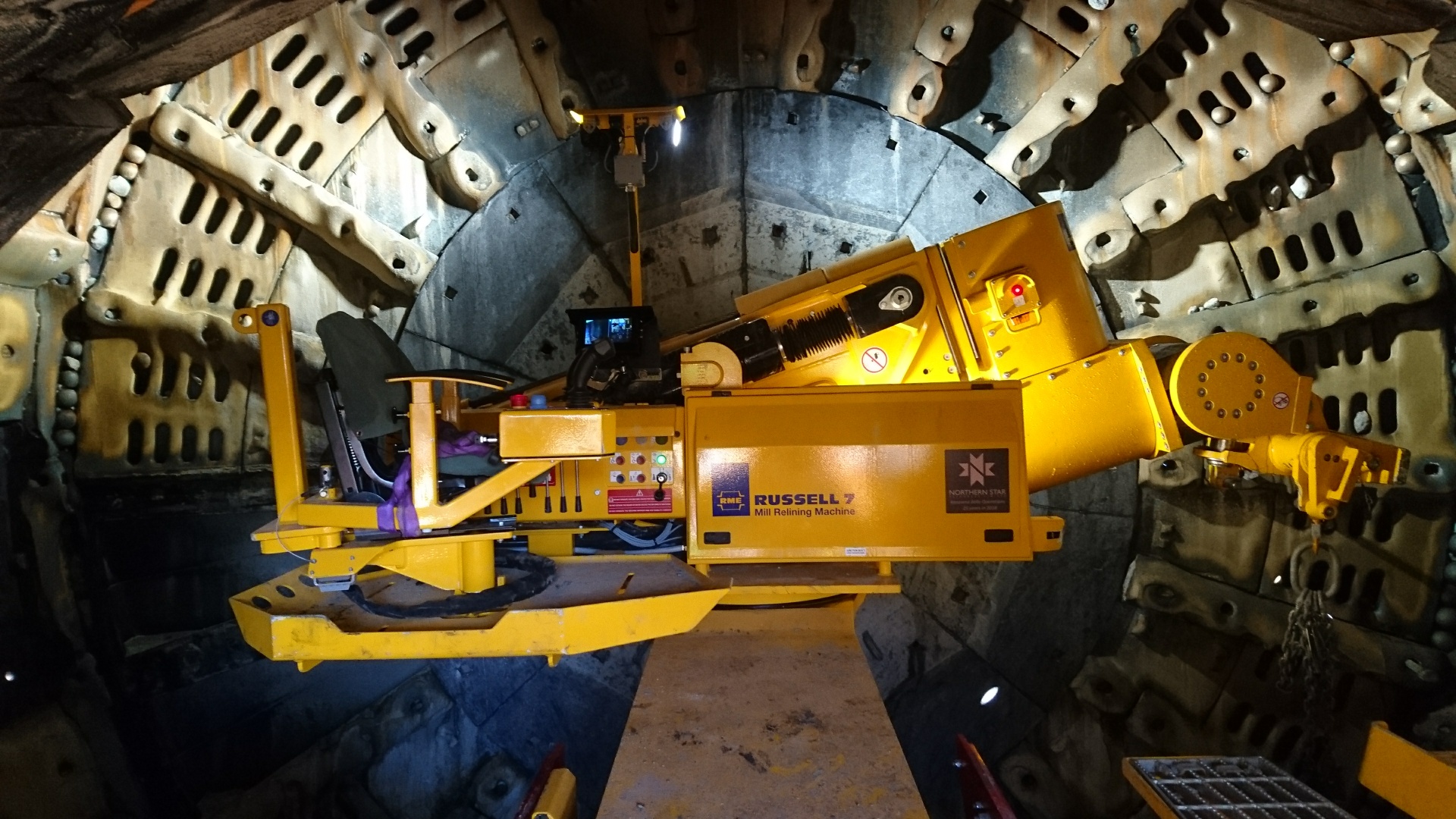Written by subcommittee member Lauren Pow, Consultant, Cannings Purple.
The Gold Industry Group had the pleasure of sitting down with Jeff Brown, Principle of Innovation and Technology at Northern Star Resources to talk about all things innovation, and a more detailed perspective on preparing for an automated future.
What can you tell us about your role at Northern Star Resources?
Mill recline machine at Kanowna Belle Gold Mine
I look at the application of existing and new technology to operations, and then research how new and innovative ideas can change processes and practices to generate better business outcomes. I engage internally to identify where our needs and new opportunities lie, and then I look externally to see what's out there and what's being developed, that can apply to what we're doing.
Has Northern Star Resources always had such a strong focus on innovation?
The short answer is yes. We created a specific role last late last year, but going back to my involvement with the Technical Services team, it has always been part of what we do. We are always looking to optimise the business in all areas. It is worth noting that for any improvement initiative to succeed you must have the right culture across all levels of the business otherwise the status quo prevails, which does not generate a better overall business outcome. Within Northern Star we continue to develop and reinforce this culture.
Innovation appears to be a strong focus for many businesses right now, is this also the case in the wider gold industry?
I think in the resources space in general there’s a lot happening. Everybody is doing things a little differently and it's not that we’re a poor performing sector from a global standard, but there is a big push to do things better. There is an opportunity for innovation to underpin what we do and to future proof the industry by adopting new technologies.
Northern Star Resources has just commissioned the world’s first automation-ready mill relining machine, can you tell us a bit about that?
Sure, so by automation-ready we refer to the ability to extend the automated functions of the machine. We will get it up and running in our current format, and the machine has the ability to increase its level of automation as technology improves. The previous machine was classified as a traditional liner handler, and while it reduced the heavy manual handling of the liners into and out of the mill, there was still a requirement to manually remove the old and place the new liner into its final position within the mill. The new relining machine takes on a lot more of the manual handling task. Using a combination of machine vision and remote control it removes the need to have people inside the mill for the reline activity. It doesn’t just make the activity quicker, it makes it a lot safer and more amenable for humans to interact with.
What does automation mean for the jobs of the future?
It is worth thinking about automation on a continuum. Automation should be thought of in terms of how automated a piece of machinery, or an activity is, or can be. The base level of automation is completely manual—lifting, driving machinery from within the operator cabin, tightening nuts and bolts by hand, that kind of activity. And then, as we move along the automation continuum, there is an increased level of machine assistance being brought into an activity, and the activities are able to utilise higher levels of technology. At the other end of the spectrum is the fully autonomous workplace. Activities are undertaken by autonomous machines and processes, making informed decisions, and generating the day-to-day work outputs.
As we move down the automation path, we will see a change in skill sets required to support the operations. While this doesn’t necessarily mean less jobs, it means different jobs within the resources sector. In the larger picture, automation has the ability to increase efficiency and lower operating costs, meaning lower cut-off grade grades, longer mine lives and improved metrics allowing near mine to commence.
Will we see a shift in the types of skill sets employees need with all these new technologies coming in to play?
Right now, we’re not seeing a huge change — we’re kind of on the cusp of automation. But we are seeing an early change come in, and as automation becomes more pervasive and the technology increases in the industry, we’re are going to see a change in skill sets, and we’re going to have to increase and diversify our skills offerings.
Apart from increasing safety and improving efficiency, are there other advantages to automated technology?
Automation really does pivot around safety and efficiency. With automation, we’re able to take people out of potentially hazardous environments, and this then translates into an ability to mine to greater depths. We can apply this technology to mine areas that we would otherwise be hesitant to explore using current practices.
So that’s on the safety front. On the efficiency front, if we can change the cost base by using new technology to increase utilisation, it allows us to access ore that is not currently economically viable. Beyond those two keys areas, there are benefits in terms of reducing operating costs, and generating more predictable and consistent outcomes. The application of automation can also enable the introduction of complex information and algorithms to further enhance the results of the given task.
Is Northern Star Resources investing in any other innovation activities?
That’s an interesting question. There are a multitude of existing technologies either on the market or in an advanced state of development that we review, and while much of this is interesting, it’s about finding the ones that are both interesting and useful.
We see that Northern Star has the ability to be an early adopter of new technologies, and as such focus much of our effort in this area. That said, we do still invest in a few early stage innovation projects that have the potential to really change the way we operate.
We also look to form key collaborations with solution providers in order to implement and further develop new technologies. We look at it as a means to develop specific solutions for our business, but also to support local businesses and start-ups who have the right focus and the attributes.
Some examples of things we are working on include alternate gold assaying techniques, underground communication systems, underground ground support systems, mining and processing machine automation, survey and positioning systems including drone applications, alternate rock breakage technology, machine learning to augment the collection of geological information, and ore sorting technology.

